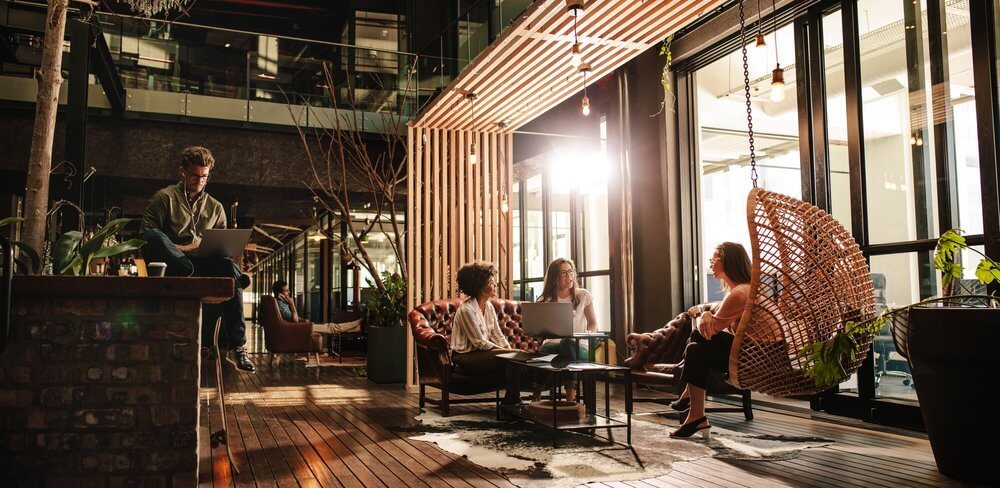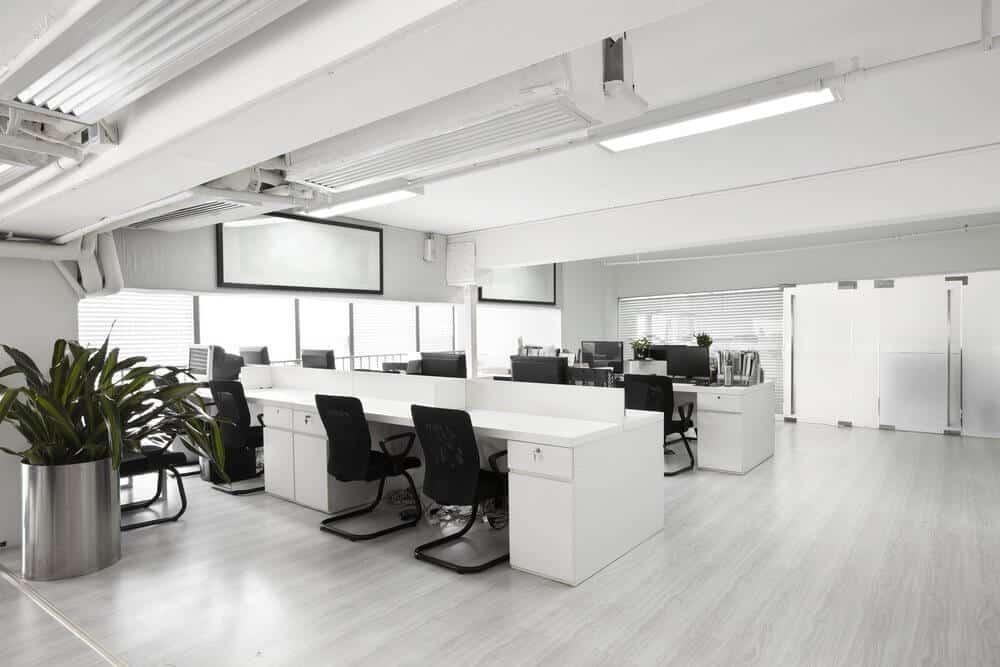
Office trends often come about because of their dual benefits to business costs and culture—but how do you determine which ones are worth investing in? Successful office trends maintain their popularity for decades. Which trends will increase overall happiness and productivity among your employees? We’ve put together a list of pros and cons for some of the biggest trends in office layout and design to help you make this decision.
Biophilic design

Biophilic design is about creating an office environment that feels more in-touch with nature. It typically involves embedding elements like green spaces, plants and scenic views into a space.
Pros
Biophilic design has been found to improve productivity, creativity and wellness for staff in an office space. It is also versatile in its implementation—incorporating plants on desks or shifting an office around to improve the amount of sunlight coming in can have strong positive effects with little energy and budget invested. Implementing this design trend is easy no matter what your space looks like—simply re-arrange desks to face an outside space or hang nature-inspired artwork.
Cons
Implementing a design that creates a natural atmosphere requires time and thoughtfulness. It is important to consider whether this design trend aligns with your organization’s culture and values—the approach may seem disingenuous if an office doesn’t hold a culture of sustainability or embrace environmental awareness.
Learn more about creating an inspiring office space to enhance engagement and company values.
Open floor plan
Open floor plans are popular for many reasons—companies like having the ability to share desks, easily communicate across departments and use the office for cultural engagements.
Pros
Open floor plans are designed to foster collaboration and team bonding. They can encourage connections between departments or staff members that would otherwise be unlikely to interact. Many notable companies like Facebook and Apple consider this to be crucial to creativity. These offices are typically more cost-effective because individual staff members don’t need their own private offices.
Cons
Open offices may not complement all working styles. Teams that need silence or deep concentration may find the office style distracting—and being observed consistently can make some team members uncomfortable. These floor plans also tend to encourage a flatter hierarchy and more transparency in the organization—something that can be good or bad, depending on the goals of the organization. Companies that require confidentiality or separation between staff and managers may find open offices to be counter-productive.
Considering transitioning to an open floor plan? Keep balance in mind.
Hot desking

In offices that practice hot desking, staff are typically not assigned to a designated office space or desk. Work desks are reserved on an as-needed basis by employees, many of whom may spend the rest of their time working remotely or travelling for meetings.
Pros
Creating a sense of flexibility and community is a major benefit of hot desking. Staff can move around their space, work where they are comfortable and introduce variety into their work environment. Hot desking can also be used strategically by companies to rent out desk space in the office to bring in more revenue, or to encourage remote working habits where employees don’t require costly full-time desk space. This system can encourage the adoption of cloud-based software and storage, allowing companies to get rid of space-consuming hardware or paperwork.
Cons
Hot desking can make organizing and building consistent behavior in the office more difficult—managers will need to be diligent in tracking the movements of their team. As well, staff lose the opportunity to personalize their workspace. Furthermore, some companies are moving away from the remote working trend, as they find teams separated by distance lack the ability to collaborate and innovate, which negatively impacts their organizations.
Encouraging employees to switch up their workspace can increase productivity and overall morale. Learn more.
IoT smart devices
The Internet of Things (IoT) is the idea of embedding typically low-tech devices like tea kettles, light bulbs or desks with computer systems to provide new functionality like wireless controls or data gathering.
Pros
Smart devices in the office serve as new points for gathering data. Information like energy usage, peak office hours and foot traffic can all be analyzed to help make the office more efficient. These devices also bring with them convenience and automation—for example, staff can schedule the coffee machine to run every morning without ever having to be physically present at the machine.
Cons
New devices add complexity and security issues to a system. Every smart device acts as another potential connection point that can be exploited. This makes IT security a much more important task for administrators. IoT devices may also require more maintenance than their low-tech counterparts. Bandwidth and network reach are limitations that come with embedding more internet-connected devices into an office.
Thinking about introducing new technology into your workplace? Here’s how to prepare.
Managers who want to introduce a new office trend should consider all of the above factors. By choosing an office layout based on quantifiable benefits like your bottom line and team productivity over trendiness and popularity, you can ensure that your office space is effective for years to come.
Looking for more tips on how to choose an office design that suits your company? Consider these three factors.
Photos: Shutterstock / Jacob Lund, Shutterstock / korkeng, Shutterstock / LI CHAOSHU




